Daily Offerings
by Sarah Magnatta
A skateboard. A syringe. A Buddha. A toilet.
Nothing seems off limits in the hundreds of drawings created by artist Gonkar Gyatso during the pandemic lockdowns in China. Individually, these “daily doodles,” as the artist calls them, appear disconnected, showcasing a wide range of subject matter, text, and composition. Yet, when viewed together, a narrative materializes. The emerging story alternates between boredom and panic, a quiet solitude contrasted by the frenetic pace of an unprecedented global pandemic. The drawings mirror a society unmoored, while providing insight into the intimacies and immediacies of the artist’s daily life. These drawings are not preparatory sketches for a painting or sculpture project; nor are they intended as individual works of art. Rather, they are the marks of an individual–marks of an ongoing, perhaps ritualistic process. Of Gyatso’s chosen medium, scholar Sunil Manghani asserts, “Drawing is ever a drive (to repeat, to make, to break) and a desire (to fix, to hold, to have, to outline). Drawing can seek order, as well as its undoing.”[1] These images of order—and its undoing—are showcased in this exhibition for the first time together.
The small drawings comprising Intimacy and Immediacy contrast markedly with the artist’s previously exhibited work. Gyatso is internationally renowned, with works showcased in several high-profile collections and galleries, including the Metropolitan Museum of Art. In 2009, Gyatso became the first Tibetan artist to exhibit at the Venice Biennale, a worldwide art fair with global audiences and a wide-ranging impact in curatorial and artistic developments.[2] He is perhaps best known for his sculptures and paintings combining pop-culture references with the classic Buddha silhouette. These juxtapositions result in layered interpretations as viewers consider the impacts of commercialization, colonization, and orthodoxy as it relates to identity, religion, and culture.

For the three masked Buddha sculptures created to accompany the drawings in this exhibition, Gyatso wanted to highlight the specific color system used by the Chinese government during the pandemic to monitor public health. A required phone app would indicate the user’s status each day: green, yellow, or red. If green appeared, one could likely pass through several travel checkpoints. Yellow or red would prevent such travel and require various lengths of strict quarantine. Gyatso’s days were tense as he routinely checked his phone status, but he also notes the equalizing effect of such a system: “Regardless of if you are rich or poor, you have to follow this system.”[3] The series of fiberglass sculptures, titled The Great Equalizer, presents three Buddha figures in seated and meditative postures with their heads painted in green, yellow, and red. Although these masked figures specifically reference the daily trials of the pandemic, their construction and forms follow a trajectory of Buddha imagery that is widely recognizable as Gyatso’s style, extending the visual idiom he has grappled with over the years in Tibet, India, New York, and London.
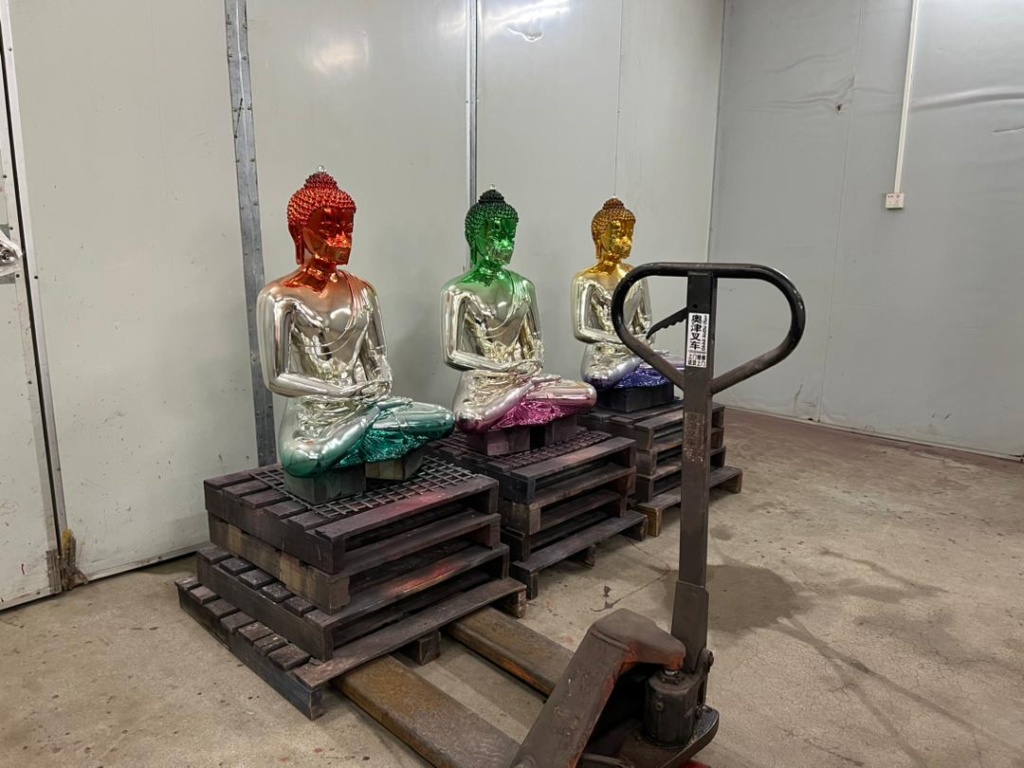
Some of the drawings in this exhibition were created in Lhasa, Tibet, and Chiang Mai and Chaing Rai, Thailand. Most were drawn at his current residence in Chengdu, China, where Gyatso experienced the harsh restrictions of an almost three-year quarantine from 2020-2022. Widespread civil unrest at the end of 2022 spurred the Chinese government to abandon its zero-COVID policy. In his daily doodles, Gyatso highlights the profound impact of the pandemic and its political implications alongside his usual pop-culture references. He reflects on and reacts to both global and local events, marking each image with their creation date in the format of day, month, and year.
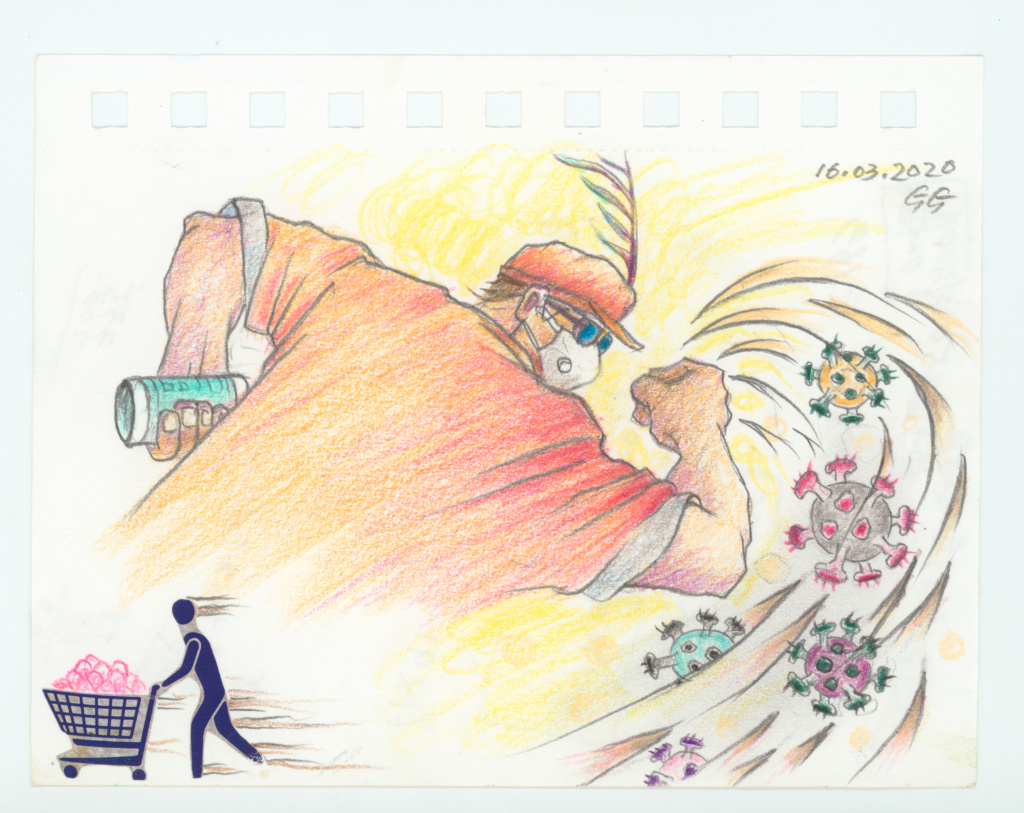
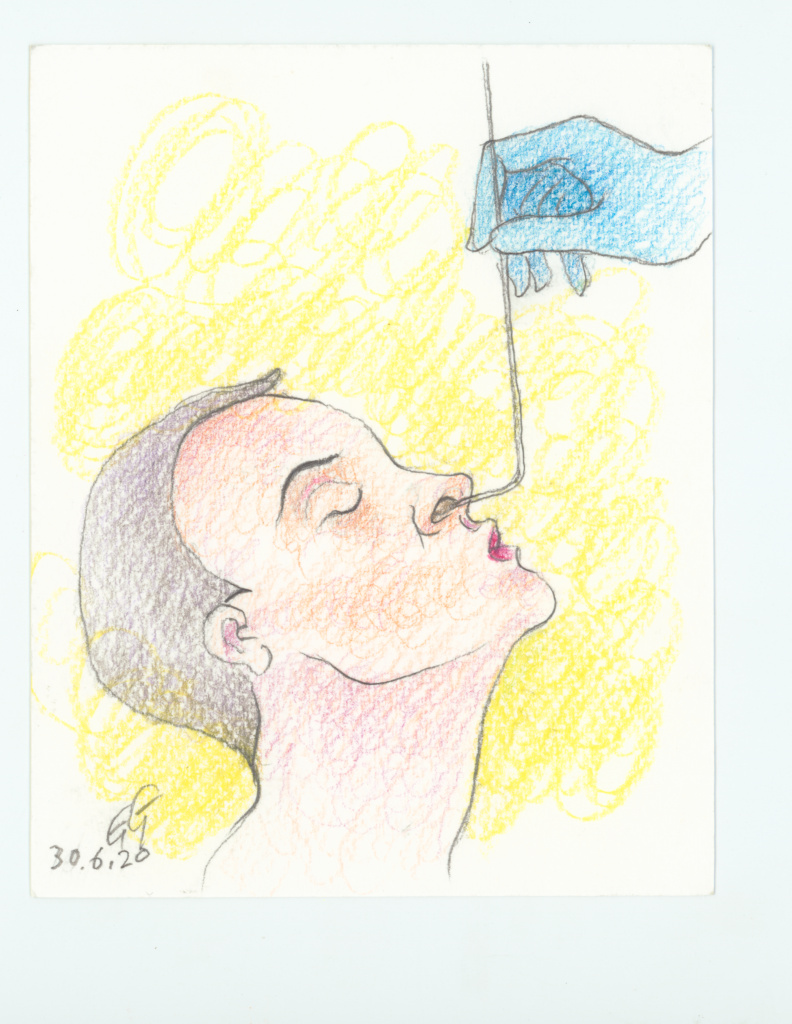
In the drawing dated 16.03.2020 (March 16, 2020), a burly-armed, masked figure throws his fist forward, perhaps attempting to knock out the swirling, abnormally large COVID-19 molecules. Gyatso notes the similarities between this central figure and those found in mid-twentieth-century Chinese Cultural Revolution propaganda posters. He recalls those images urging viewers to “beat the imperialists” that depicted drawings of “a little figure [British and American imperialists] and the giant Chinese soldier or factory worker beating them.” He states, “that was my impression when the government said ‘we can beat this thing [COVID-19]. Don’t worry. Everyone just has to collaborate.’”[4] His comment draws attention to the ongoing misgivings of the public in light of the government’s history of inflammatory (but also, placating) rhetoric—here, the imperialists are replaced by the virus molecules. In the same image, a small featureless shopper pushes a full grocery cart, pointing to panic-buying during the early days of the pandemic in both China and the United States.
A drawing dated 30.6.2020 captures the ubiquity and bodily invasion of testing, as a figure’s head arches back, eyes closed, lips pursed, the testing swab inserted through the nose. Gyatso’s COVID-related drawings seem to alternate between the everyday norms of the moment, including social distancing and testing, and the human desire to break through, showcasing a communal anger at the havoc wrought by the virus.
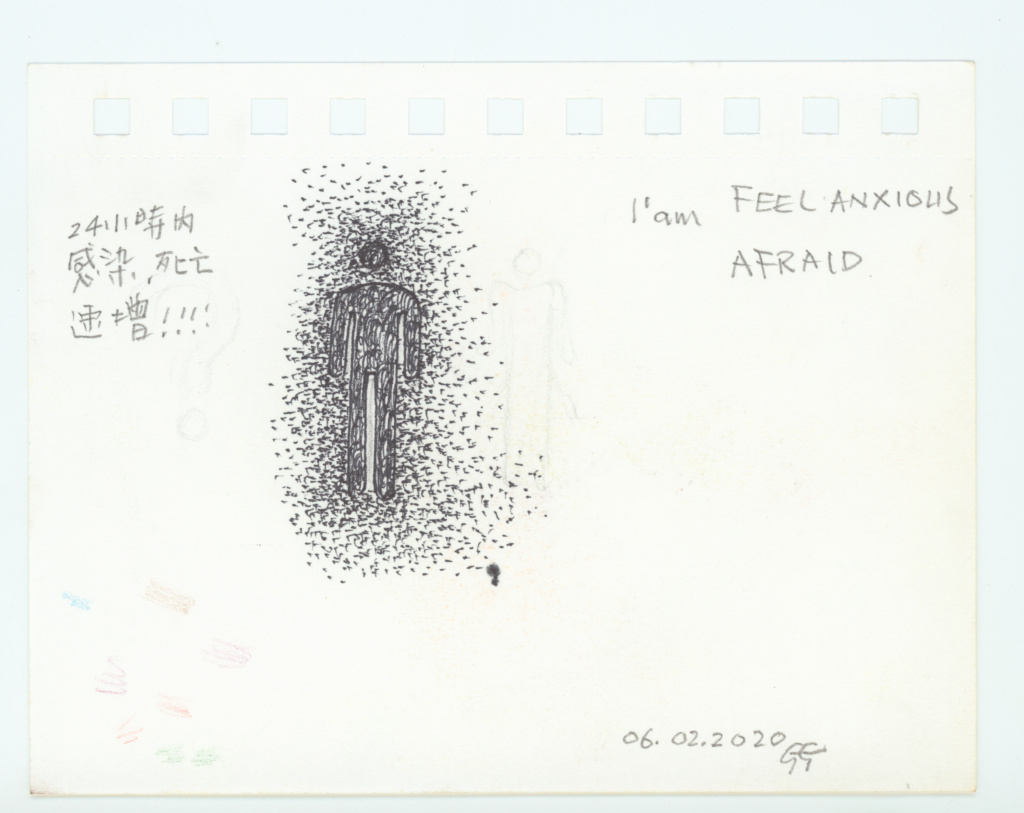
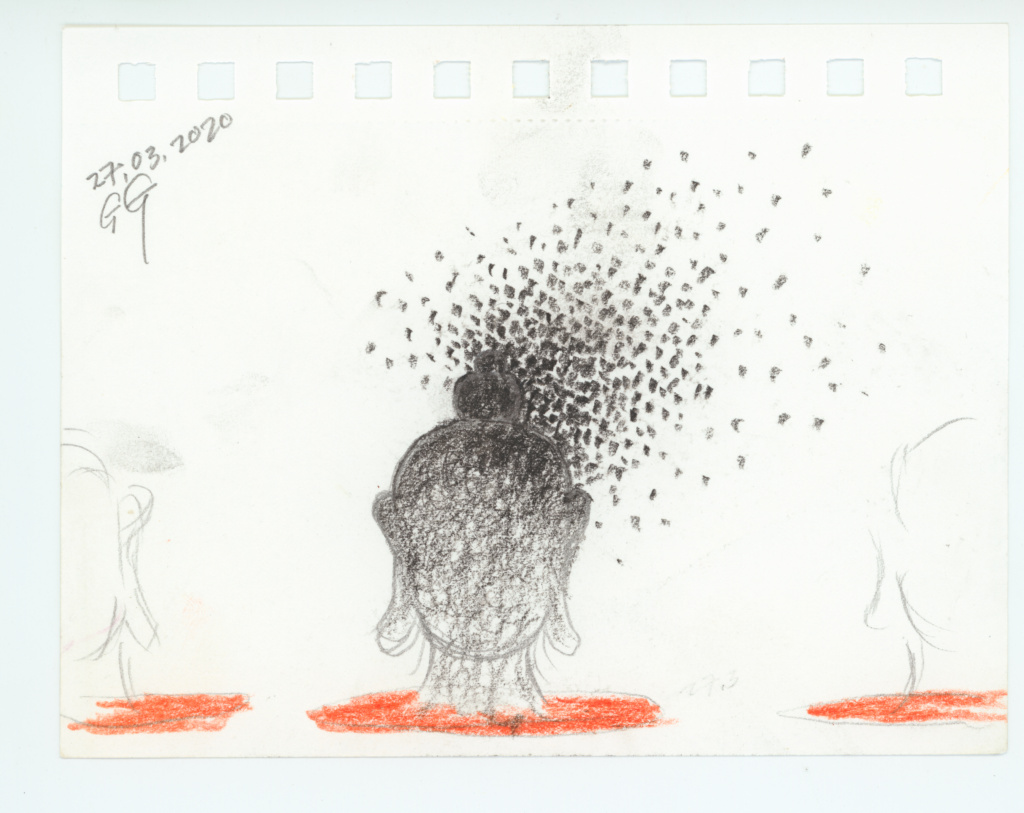
Gyatso’s 06.02.2020 drawing depicts a stark figure, akin to a restroom door pictogram, accompanied by the English words “I’am [sic] FEEL ANXIOUS AFRAID.” The additional Chinese text reads, “In the past 24 hours, the infection rate and death toll dramatically increased.” The dark figure is surrounded by aggressive marks that seem to shroud, swarm, and trail him. Gyatso envisioned the virus this way during the early months of the pandemic.[5] There is a discomfort to the image, and the texts in English and Chinese reiterate the unease. Those same marks or viral molecules seem to circulate above a Buddha’s head in a drawing dated 27.03.2020. Red ovals ring three disembodied Buddha heads–two colorless, one shaded black–referencing the “2-meters between” spacing required in China’s communal areas. The featureless heads, coupled with red marks around their necks, create an ominous effect. In this and other drawings, Gyatso’s recognizable Buddha silhouette returns, if only briefly.
The subjects of Gyatso’s drawings include references to other world events during the pandemic period, including those within the U.S. political and social landscape. For instance, after the murder of George Floyd in May 2020, Gyatso’s doodles included two drawings containing the James Baldwin quote, “Ignorance allied with power is the most ferocious enemy justice can have.” The image dated 13.6.2020 contains only the quote and attribution in smudged black lettering. One month later, Gyatso’s 21.07.2020 drawing reuses the quote in the context of a Facebook social media post, echoing the most prominent communication tools of the time. I first saw Gyatso’s doodle series on Facebook as he posted them daily—at the time, a much-welcomed moment of connection to and for many artists during the early months of the pandemic. Social media has shown itself to be a helpful tool for social organization, but also a mirror of society’s ills. Gyatso’s drawing occupies these disparate spaces as a reflection—from a collapsed distance made possible through social media—on race relations in the United States.
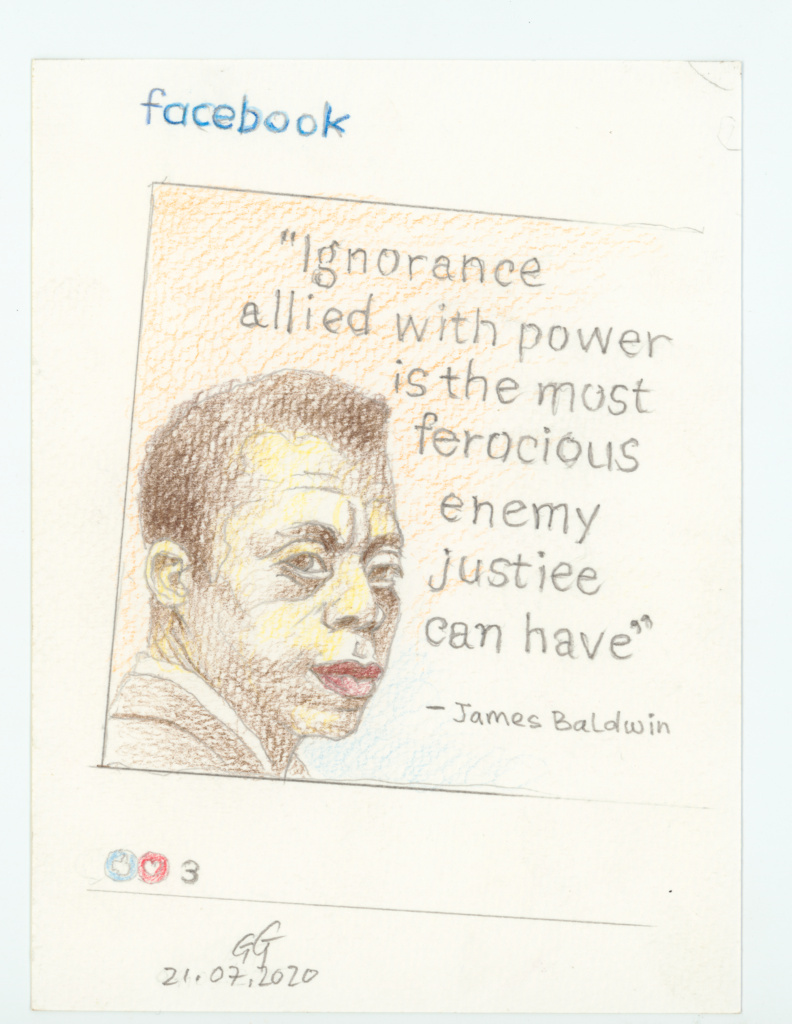
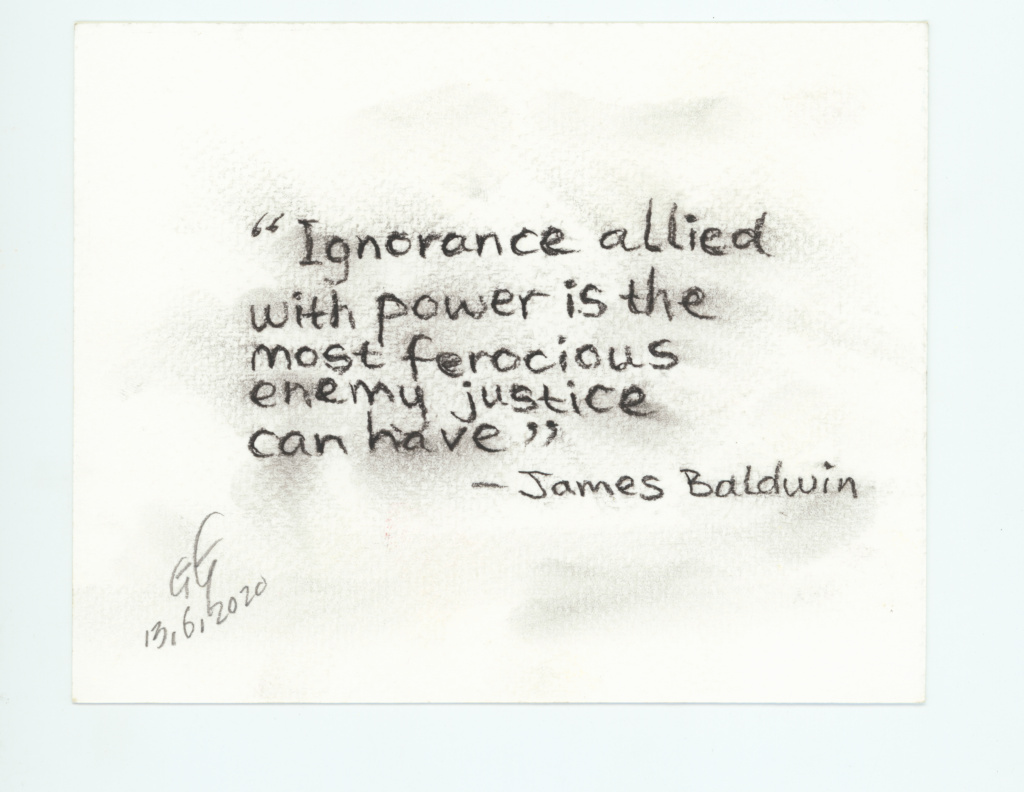
Following the U.S. presidential election in 2020, Gyatso’s 08.11.20 drawing situates the blue and red bars of the electoral college count under images of Mickey Mouse standing in for Joe Biden and Minnie Mouse for Donald Trump. The well-known mouse characters highlight Gyatso’s ongoing incorporation of pop-culture references, though in a minimal manner here. Shortly after this drawing, Gyatso’s images begin to include more stickers, colors, and elaborate compositions. A horror vacui emerges in the drawings as they shift from “doodles” to more complex and multimedia imagery.[6] In the drawing dated 15.11.2020, a sketch of the standing artist’s back faces the viewer as the figure creates a drawing within the drawing; he is surrounded by masked faces, various texts, a vial, a fish, a star, and the Nike swoosh symbol, amongst other images and stickers.
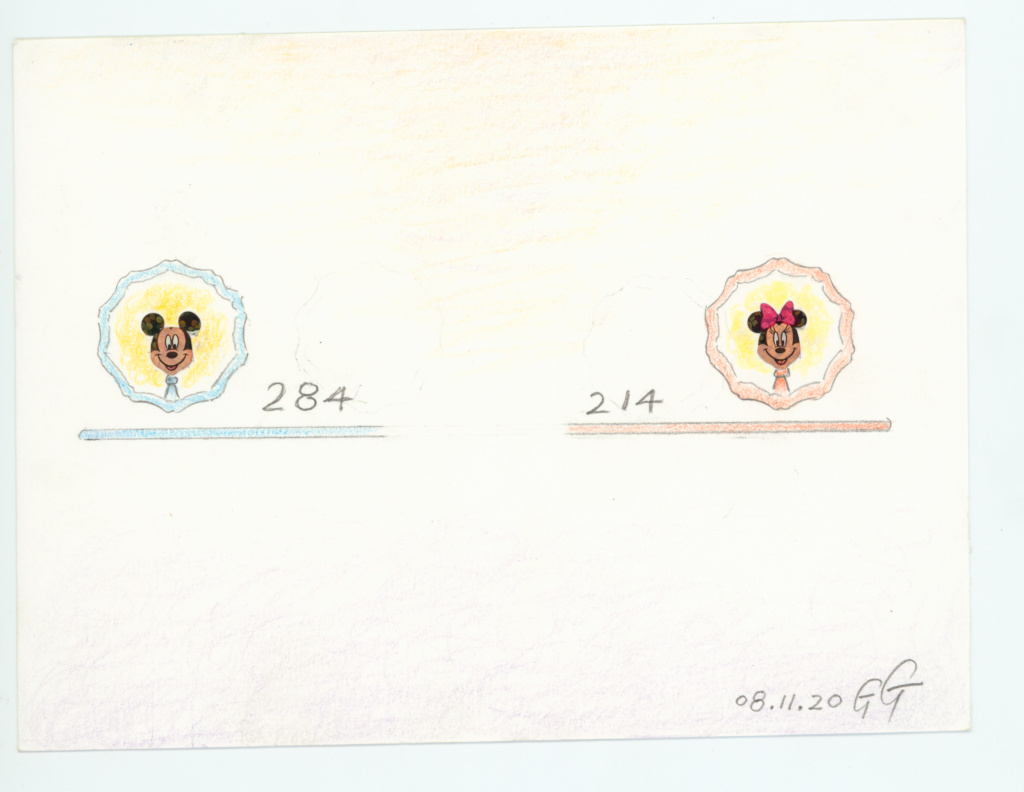
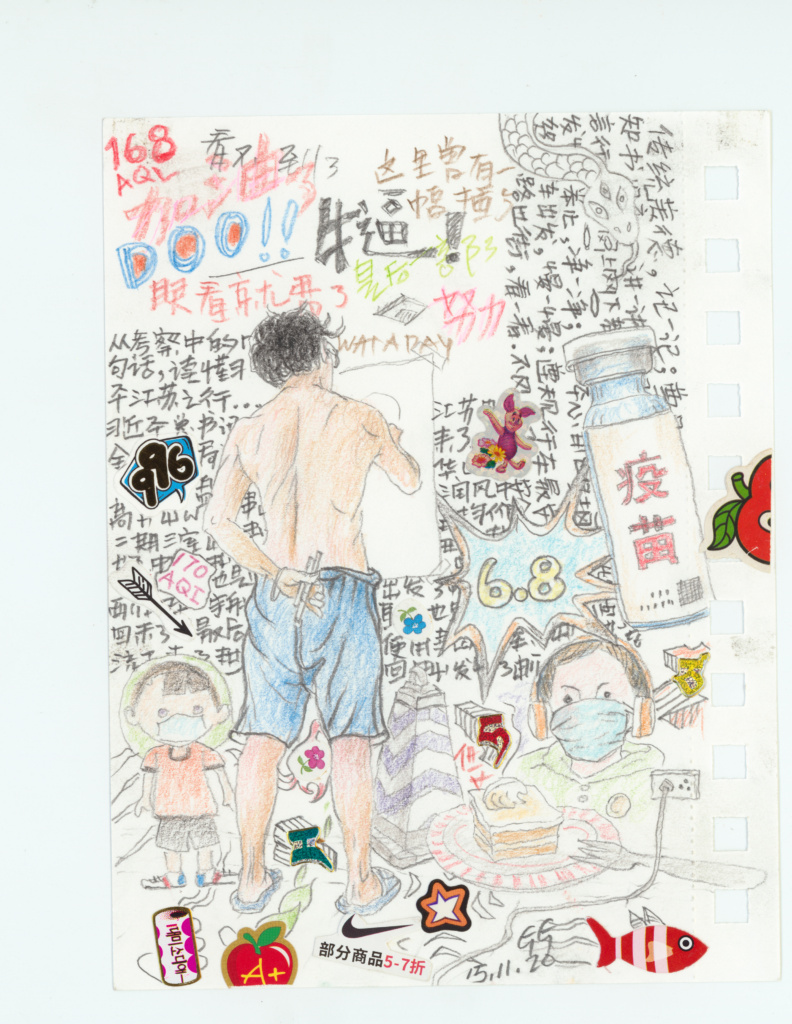
Gyatso also begins to incorporate the letters “AQI” in his drawings, a reference to China’s air quality index. He includes AQI indices from both a Beijing monitoring center and the U.S. Embassy, with the latter consistently reporting higher numbers. Gyatso finds an important tension between the two disparate values.[7] The numbers contribute to a rising freneticism in these works that mirrors the global anxieties of our time, including those related to the pandemic and ongoing climate change disasters. While these images starkly contrast his earlier sparse doodles, they consistently retain an element of immediacy: Gyatso is still reacting to events in real time.
In yet later works, Gyatso switches to a circular format for his drawings, noting a desire to revisit forms and techniques he learned during his time studying Chinese brush painting in school, including the popular use of circles. But he also notes, “I did the squares for years and got tired of it.” The circle’s telescopic appearance contributes to a compressed intensity—as if viewers are engaging these chaotic scenes through a constricted lens. Some themes remain consistent with his earlier drawings, such as the image of the central strongman (02.11.2022) and the virus-tested figure (25.10.2022).
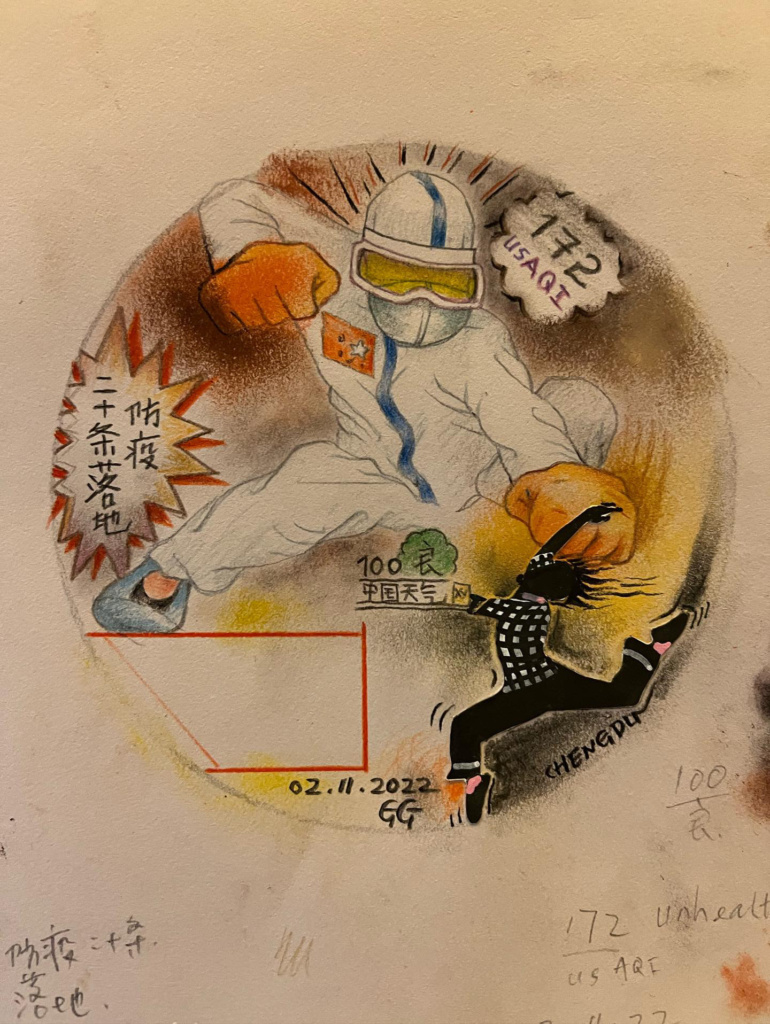
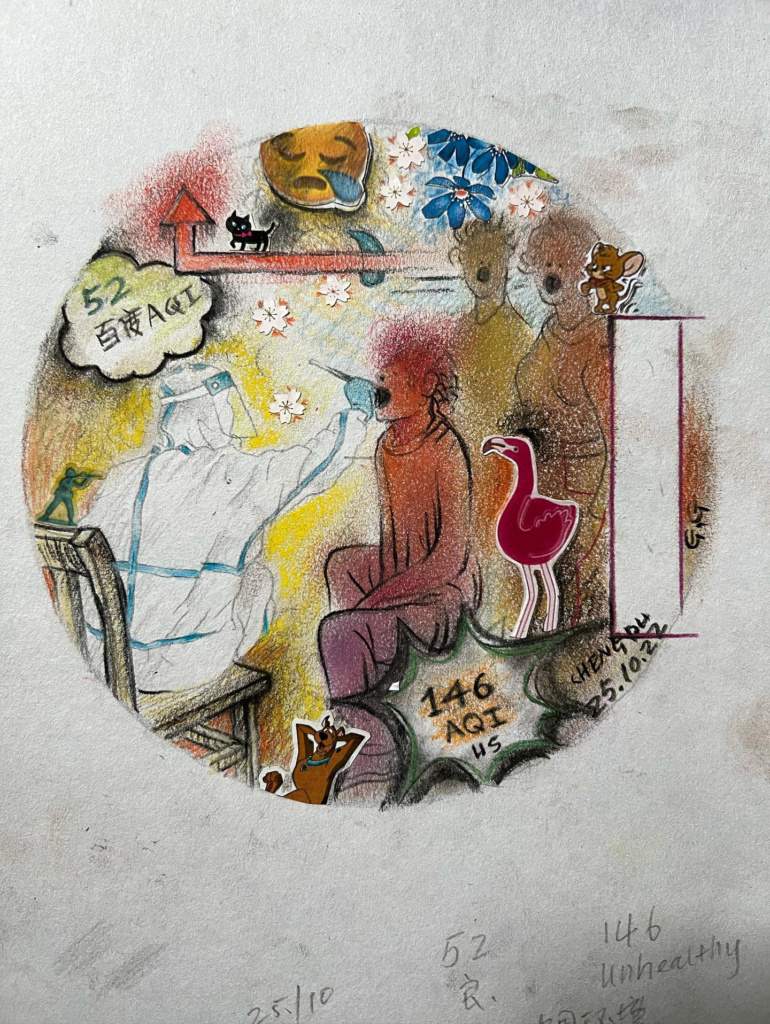
In addition to these drawings of social and global events, more personal and introspective snapshots appear throughout the series. Several self-portraits offer an intimate window into the artist’s psychological space and self-identity. While Gyatso has created more formal self-portraits, namely his My Identity (2003) series of photographs, the immediacy of drawing elicits a different, more vulnerable tone. In 28.04.2020, the harried artist looks toward the viewer, eyes staring intently with an emotion akin to trepidation or fear. Other self-portraits, including 25.04.2020 and 09.5.2020, likewise convey the intimate state of the artist in a manner not seen in his other work. These self-portraits continue throughout the months and years of the drawing series. In some, the artist faces us and matches our gaze. In others, such as 14.02.2021 and 19.02.2021, the artist’s face is blocked, or he plugs his ears and closes his eyes—perhaps commentary on a desire to retreat from a range of ongoing global crises.
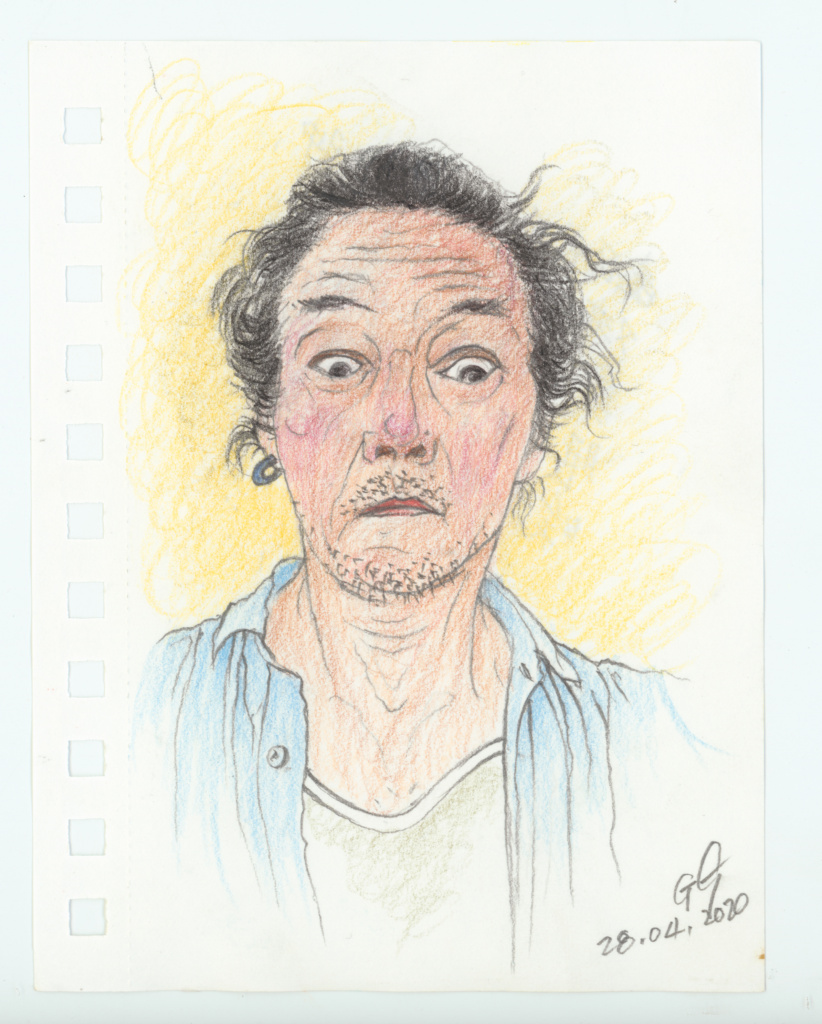
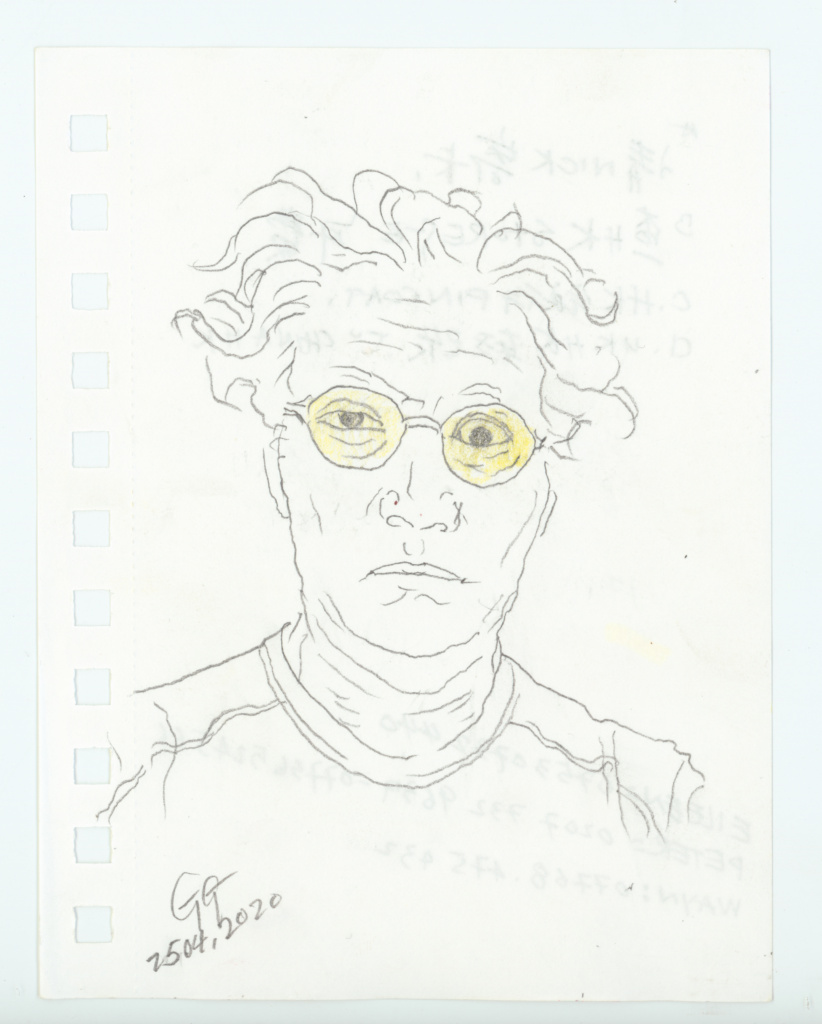
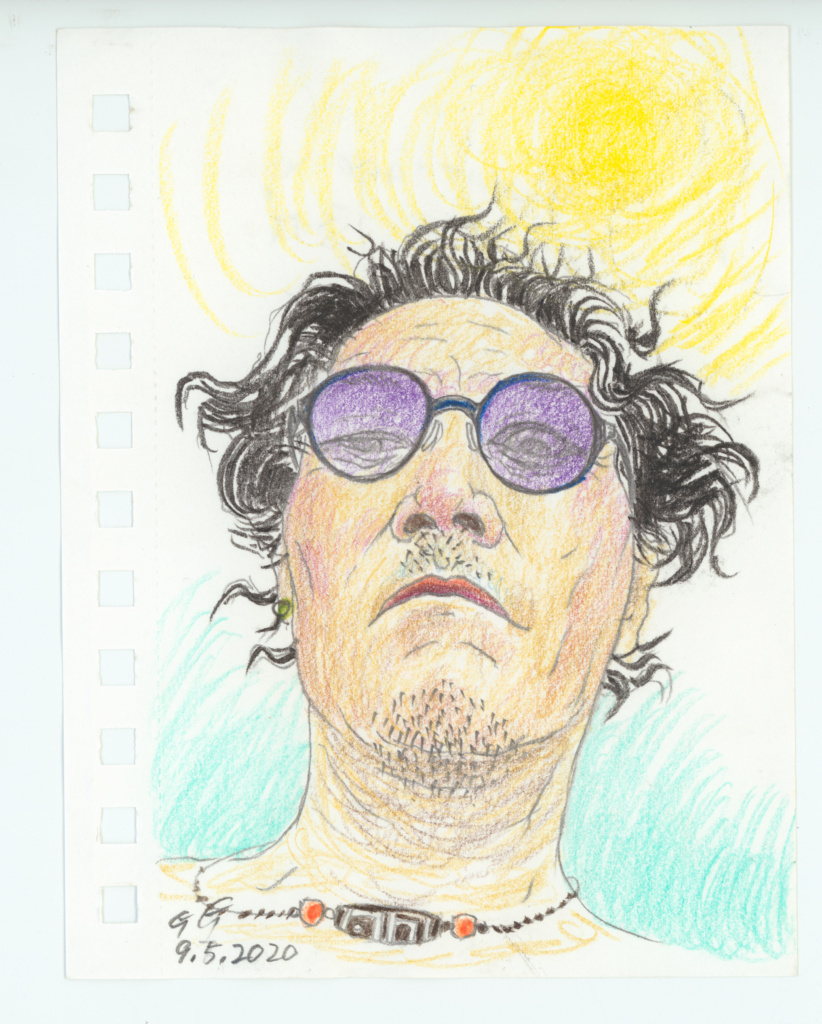
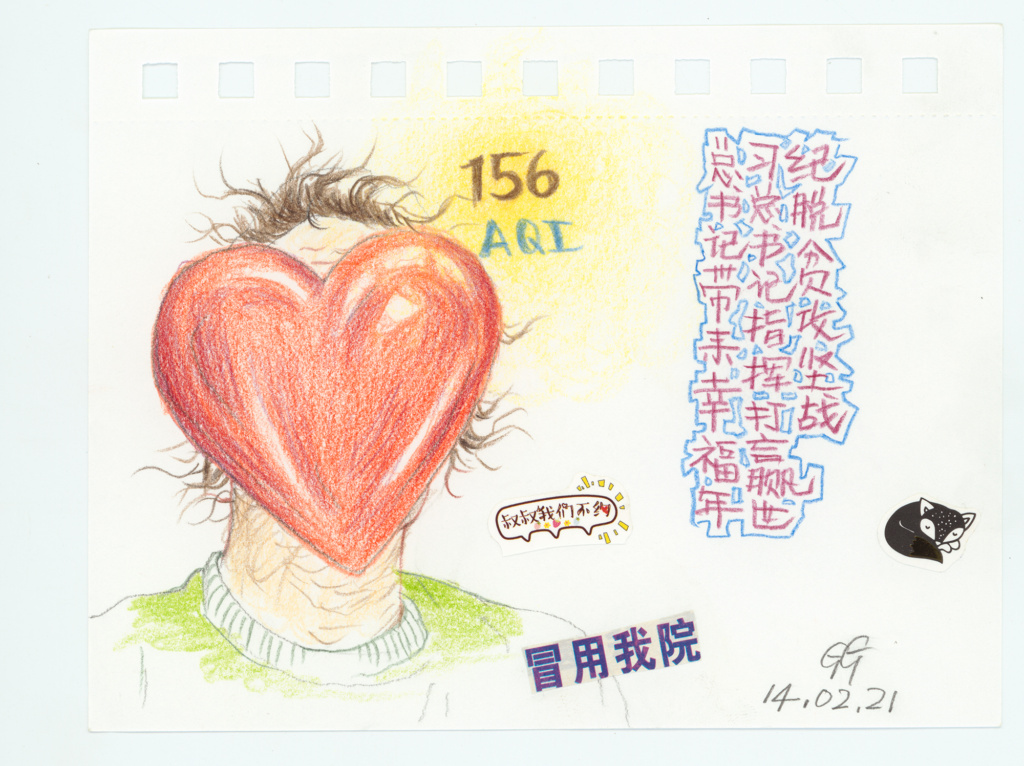
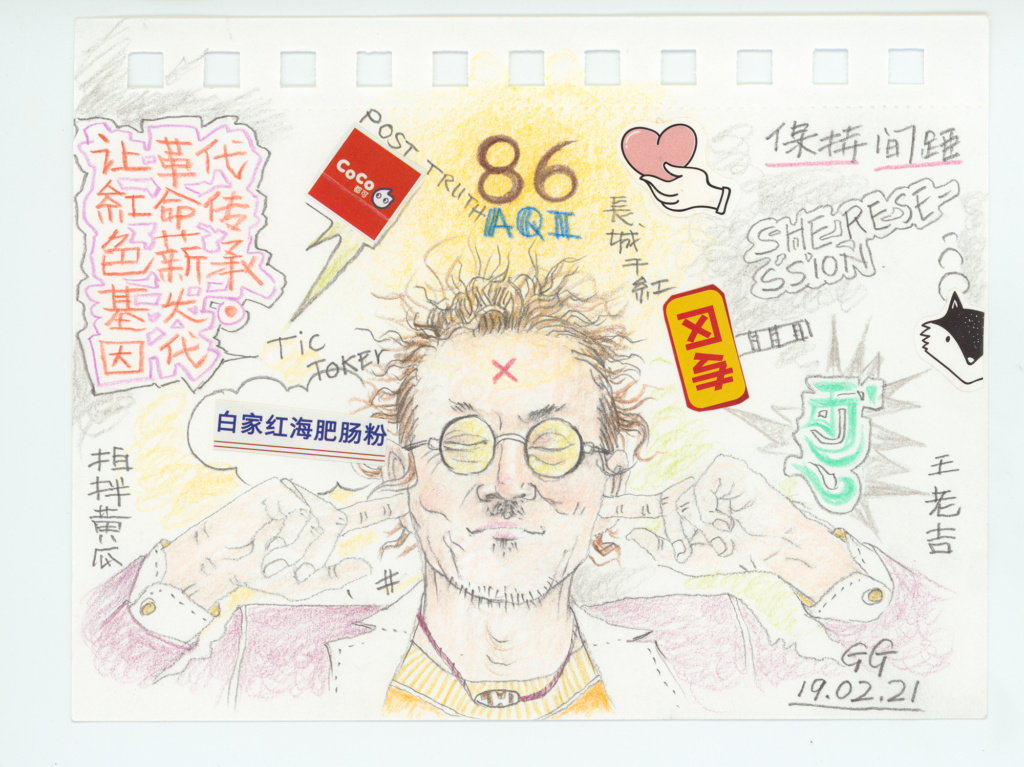
When taken together, the images in the series reflect a repetitive process in the artist’s practice. Gyatso’s daily doodles highlight an almost meditative aspect to his work. We might compare this repetition to an installation/performance work by the artist during a trip to Colorado in 2016.[8] The installation, titled 1020 Offerings, consisted of a large grid layout in the spacious Boulder Creative Collective Warehouse. The artist arranged white papers in a regimented manner within the borders of a taped grid pattern. He then asked audiences viewing the installation to take a gold offering bowl–the kind used in Tibetan Buddhist practice–and place it on each page. The grid was gradually filled with the gold offering bowls as the white pages were covered with a total of 1020 offerings in the installation space. While quite different from the medium of drawing and Gyatso’s drawing series, particularly in the installation’s communal efforts and larger scale, 1020 Offerings reflects an integral aspect of repetition. Instead of a daily drawing, the repeated process is done quickly and with participants, but the result still asks us to consider the totality of the objects together. Both works explore the notion of continuation. Following the installation, participants were allowed to take the offering bowls home, thus continuing the presence of Gyatso’s work in a diaspora of sorts—an ongoing journey for each bowl.


Similarly, Gyatso’s drawing practice continues steadily, as he adds daily to the group of drawings shown in this exhibition. Whereas the white pages of the 1020 Offerings installation remained blank, the white pages of Gyatso’s drawings are filled with color–the drawings themselves a daily offering. With reflection and repetition in mind, I return to Sunil Manghani’s assertion that “drawing is searching.” It is an ongoing process for the artist who reflects on his daily doodles as “the first time in my life I did something just for fun, just for myself, not for an exhibition and not for collectors and not for sale.”[9] The marks, images, and texts within these 300+ drawings highlight an aspect rarely seen and appreciated in gallery and museum spaces: the intimacy and immediacy of the artist’s daily work.
All photographs and images ©Gonkar Gyatso and courtesy of the artist. 1020 Offerings photography by Ariana Maki.
[1] Sunil Manghani, “Drawing Desires,” in Kelly Chorpening and Rebecca Fortnum, eds. A Companion to Contemporary Drawing (Newark: John Wiley & Sons, Incorporated, 2020) 325-342.
[2] For more on Gyatso’s participation in the 2009 Biennale, see Clare Harris, “In and Out of Place: Tibetan Artists’ Travels in the Contemporary Art World,” Society for Visual Anthropology Review 28, no. 2 (2012): 152–163.
[3] Interview with the artist, August 25, 2023.
[4] Interview with the artist, June 21, 2023.
[5] Interview with the artist, June 21, 2023.
[6] When asked about the transition, Gyatso could not recall any specific reason or event that instigated the change. Interview with the artist, June 21, 2023.
[7] Interview with the artist, June 21, 2023.
[8] Gyatso is planning a similar installation/performance project in the Vicki Myhren Gallery to coincide with the opening of his drawing exhibition in September 2023.
[9] Interview with the artist, June 21, 2023. As he notes, Gyatso did not create these drawings with an exhibition in mind. I expressed an interest in showcasing them as a collection during a conversation with the artist in 2021; we began planning this exhibition shortly after. Gyatso has also shown six of the drawings in Beyond the Threshold: Tibetan Contemporary Art and forty scanned replicas in 1m x 1m ≠ ∞, both exhibitions at Vassar College in 2022.
